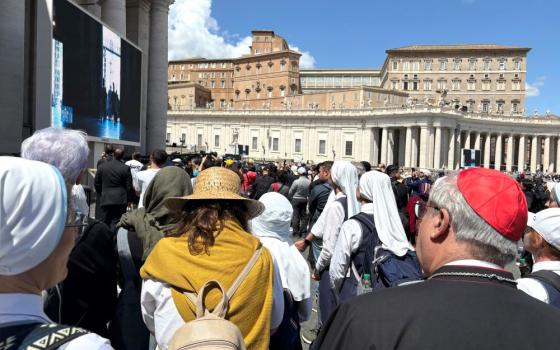Today, I begin a week-long look at some of the key historiography of the relationship of religion to the American founding. Other writers would point to different works, I am sure, but these are the books that have convinced me that any effort to “baptize” the American founding is deeply problematic, at least for a Catholic. As well, I hope these essays will point to the long history of some of today’s most contentious issues regarding the relationship of religion to politics. In any event, the books surveyed are all very good reads.
The American Revolution did not come to birth by accident. The generation of the founding fathers was exceptionally verbose, they were not at all shy about setting forth their reasons for breaking with Great Britain, and they committed those reasons to print so that we can continue to survey them and analyze them. Whatever the provenance of those reasons for the break, it was a break, and before it took place, most Americans considered themselves British. Colonial America was never far removed from the political debates of the Mother Country. And, consequently, any analysis of the motives of the American founders must start in the political language and ideas of Great Britain.
Linda Colley’s Britons: Forging the Nation 1707-1837 brilliantly paints the British backdrop to America’s Revolution by examining exactly how the peoples of England, Scotland and Wales became Britons in the course of the eighteenth century. She weaves together the factual account of that century and a quarter with the key themes that shaped British identity. Her treatment of the role played by becoming an empire and, indeed, the dominant empire of the world, the role of emerging trade relations and what we would today call a financial industry, the development of ideas of majesty focused on the King, all play their part. But she begins with an examination of religion and the foundational significance of Protestantism in British identity.
Colley states her thesis succinctly:
At odds in so much of their culture and secular history, the English, the Welsh and the Scots could be drawn together – and made to feel separate from much of the rest of Europe – by their common commitment to Protestantism. To a very limited extent, this had been the case since the Reformation. But throughout the eighteenth and nineteenth centuries, and even after, external pressures and imperatives made the fact that this was an overwhelmingly Protestant culture relevant and compelling in a quite unprecedented way.
Colley notes that the chorus of Rule, Britannia – “ Rule Britannia, Britannia rule the waves, Britons never shall be slaves” – looks outward: Britons are not called to rule the shires but the waves. And across the closest waves stood France, Catholic, royalist, powerful France. Great Britain, formed by the Act of Union in 1707, was already at war with France at the time, a war that lasted until 1713. The conflict was renewed from 1739-1748, and again from 1756 to 1763. During the War of Spanish Succession (1702-1713) and the War of Austrian Succession (1739-1748) the French supported Jacobite efforts to invade Britain and reclaim the throne for the Catholic Stuarts. The threat of a Jacobite invasion stalked the years between wars too. So, these wars of empire were also wars of religion and the political leaders at Westminster were keen to emphasize the religious aspect of the struggles. They had already required King William and Queen Mary to swear to uphold Protestantism before being crowned. In 1702, Queen Anne was also made to declare herself against the doctrine of transubstantiation before being crowned. Political and religious legitimacy were intertwined: To be British was to be Protestant and to be Protestant in Britain was to be not only un-Catholic but anti-French.
Look again at that chorus of Rule Britannia. The confidence that Britons would “never be slaves,” spoke to a fear. Eighteenth century Britons were not afraid that they would next day wake up as enslaved Africans on a South Carolina plantation. The “slavery” of which they spoke was the slavery of being subject to arbitrary government and priestcraft. To be French and Catholic was to be a slave, to be unfree. That was the fear, and this particular fear forged a sense of British identity. And, obviously, if this was their understanding of slavery, their understanding of freedom was different in significant ways from the meaning we assign that loaded word today.
There were cultural reservoirs of anti-Catholicism upon which to build. No holiday was more precious than November 5, marking the anniversary of William of Orange’s landing in 1688 to overthrow the Catholic James II and the foiling of 1605 Gunpowder Plot, which aimed to overthrow King James I and parliament, a Catholic plot engineered by Guy Fawkes. Indeed, these two dates made it into the nine key dates listed in the “Protestant Almanack” published in 1700, alongside “The Creation of the World,” “The Incarnation of Jesus Christ,” England Received the Christian faith,” “Martin Luther wrote against the Pope,” two additional “deliverance[s]” from popery, and the burning of the City of London. The frontpiece of the almanac also advertised that the text would describe “the bloody aspects, fatal oppressions, diabolical conjunctions, and pernicious revolutions of the papacy against the Lord and his anointed.” In 1714, when Queen Anne died without issue, parliament skipped over more than fifty heirs closer to her in bloodline to place the crown on a Protestant from Germany. Anti-Catholic bigotry persisted even after the last hope of the Stuarts was extinguished at the Battle of Culloden in 1746: The Gordon Riots, the most violent anti-Catholic riots in London, did not occur until 1780. This anti-Catholicism, Colley observes, was no mere “atavistic survival of an earlier age, an embarrassing and peripheral aspect of British plebeian culture perhaps, but otherwise unimportant because so plainly irrational. Intolerant Protestantism represented far more in this society than paranoid thuggishness….it served as a powerful cement between the English, the Welsh and the Scots, particularly lower down the social scale.”
Popular literature was, at this time, dominated by religious subjects and, apart from the Bible, no two works gained wider currency than Foxe’s Book of Martyrs, complete with agonizing woodcuts, and John Bunyan’s The Pilgrim’s Progress. Both works went through multiple editions and at ever decreasing cost. Both works also portrayed Catholicism as the embodiment of evil, home of the anti-Christ, from which Britain had been delivered by God Himself. Colley writes, “An apocalyptic interpretation of history, in which Britain stood in for Israel and its opponents were represented as Satan’s accomplices, did not fade away in the face of rationalism in the late seventeenth century, but remained part of the thinking of many devout Protestants long after.” And, after regulations on printing presses were lifted in 1695, literature of all sorts was far more readily available to people of all social ranks than ever before. The eighteenth century may have been bigoted, but it was a literate bigotry.
Nor were these twin themes of Britishness as anti-Catholicism and Briton as under the special protection of Providence limited to low culture. George Frederick Handel composed his opera “Judas Maccabaeus” to honor the Duke of Cumberland’s victory over the Catholic Jacobites at the Battle of Culloden in 1746. (The only other cultural artifact of that battle? Check out the label of a bottle of Drambuie – it was the private liqueur of Bonnie Prince Charlie and the man who made it stayed on in Scotland while his master fled back to France after the battle.) Colley also looks at William Hogarth’s paintings for their anti-Catholic propaganda value. The “Calais Gate” features a fat monk, homely nuns, scrawny and effeminate French soldiers and “even a forlorn Scottish Highlander, forced into exile and garlic-eating because he has rebelled against his Protestant sovereign George II.” The “March to Finchley” shows a British soldier being fought over by two women. One, beautiful, and pregnant, dressed all in white, with a copy of the words “God Save the King” attached to her basket. The other woman is ugly, much older, with a crucifix hanging from her neck and a basket full of opposition newspapers. The message was clear, and the viewer is cheering for the soldier to choose the beautiful future (the first woman is pregnant) rather than the wretched, and Catholic, past.
This close relationship between British identity and Protestantism also brought with it a refurbished sense that Britain was a county uniquely blessed by Providence, destined to play a special role in the world. Look again at Rule Britannia. The opening verse is “When Britain first at heaven’s command, Arose from out the azure main, This was the charter of the land, And guardian angels sung the strain: Rule, Britannia….” God called Britain into being. Americans would make sure this sense of providential solicitude survived their break with Great Britain, was recast as American, and it still survives today.
Colley concludes her section on Protestantism thus:
A sense of Protestant unity did not always override social class, anymore than it overwhelmed the profound cultural and historical divisions between the English, the Scottish and the Welsh. [Or, I would add, did it always override the divisions within Protestantism.] But to the question: Who were the British, and did they even exist? Protestantism could supply a potent and effective answer, perhaps the only satisfactory answer possible. Great Britain might be made up of three separate nations, but under God it could also be one, united nation. And as long as a sense of mission and providential destiny could be kept alive, by means of maintaining prosperity at home, by means of recurrent wars with the Catholic states of Europe, and by means of a frenetic and for a long time highly successful pursuit of empire, the Union flourished, sustained not just by convenience and profit but by belief as well. Protestantism was the foundation that made the invention of Great Britain possible.
This, then, was the culture from which the American founders would derive their principal ideas about religion, about governance, and about the relationship between the two. The political worldview from which our Founders came was drowning in religion but there was little room in that worldview for Catholics or for Catholic ideas about society and governance.
Tomorrow, we will look at how one strand of those British ideas became especially important to the polemicists that stoked the revolutionary ferment. But, first, having referred to Rule Britannia three times, and because it is simply a great song, here is a video of the Last Night of the Proms with mezzo-soprano Sarah Connolly leading the audience at Albert Hall in a rousing rendition of this ideologically significant tune.



